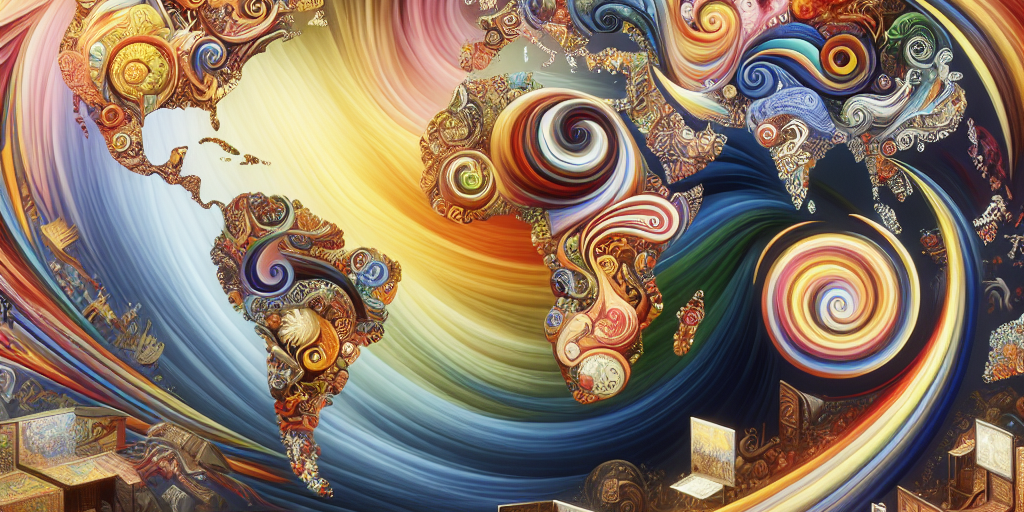Art Without Borders: How Globalization is Shaping the Art Market
In the age of globalization, the art world is undergoing a transformative evolution. Art, often considered a universal language, transcends borders more fluidly today than ever before, thanks to the advances in technology, communication, and transportation. This interconnectedness is driving a dynamic shift in the art market, altering how art is produced, distributed, and consumed across the globe.
The Digital Revolution and Art Accessibility
One of the most significant influences of globalization on the art market is the rise of digital platforms. The internet has democratized access to art, breaking down geographical barriers that once limited the appreciation and purchase of art to specific regions. Online galleries and auction houses have proliferated, allowing collectors to acquire pieces from any corner of the world with a few clicks. Websites such as Artsy, Saatchi Art, and even giants like Christie’s and Sotheby’s are now showcasing art in virtual spaces, broadening the reach of artists and offering a diverse palette of styles and cultural narratives to global audiences.
Moreover, social media platforms like Instagram and TikTok serve as virtual galleries where artists can display their work to an international audience without the mediation of traditional galleries. This direct access to audiences empowers artists from regions that were previously underrepresented in the global art scenario, fostering a more inclusive and diverse art community.
Evolving Art Trends and Cross-Cultural Influences
Globalization facilitates a cross-pollination of artistic styles and trends. Artists are increasingly drawing inspiration from a mosaic of cultural influences, producing hybrid artworks that reflect the complexities of a connected world. This fusion of styles not only enriches the art itself but also appeals to a broader audience seeking novel experiences and narratives.
For instance, contemporary African artists are gaining prominence on the global stage, combining traditional elements with current socioeconomic themes, thereby reshaping perceptions of African art. Similarly, the Korean art scene has seen exponential growth, largely driven by the global K-art wave, which mirrors the immense popularity of K-pop and Korean cinema.
Economic Impacts and Market Dynamics
The globalization of the art market has profound economic implications. With the expansion of affluent classes in emerging economies like China and India, the art market has experienced a surge in demand and competition. Collectors from these regions are increasingly influential, directing attention and investment towards their local artists while also acquiring Western art, leading to a more balanced market.
However, this economic boom also brings challenges, such as the commodification of art and the risk of cultural homogenization. The pressure to cater to international tastes can dilute artistic uniqueness, prompting artists and galleries to strike a delicate balance between maintaining cultural integrity and appealing to a global audience.
The Role of International Art Fairs and Exhibitions
International art fairs and biennales have become pivotal events in the art world calendar, promoting cross-border cultural exchange. Events like Art Basel, the Venice Biennale, and the Frieze Art Fair are not just commercial hubs but also cultural gatherings that celebrate diversity and foster dialogue among artists, collectors, and curators worldwide. These platforms provide an opportunity for artists to exhibit their work to a diverse audience, facilitating collaborations and opening new markets.
Challenges and the Future Landscape
Despite these opportunities, globalization poses significant challenges, such as intellectual property issues and the potential exploitation of artists from developing regions. As the art world becomes more interconnected, ensuring ethical practices and safeguarding artist rights becomes crucial.
Looking to the future, the art world will likely continue to evolve through the lens of globalization. Embracing technological innovations like virtual reality and blockchain could further reshape how art is experienced and owned, knitting the global art community even closer together. As we move forward, the art market’s challenge and opportunity lie in maintaining a balance between embracing global connectivity and preserving the unique identities that make art a rich tapestry of human expression.
In conclusion, globalization is not just shaping the art market; it is redefining it. As art continues to traverse borders with ease, the world grows richer in cultural narratives and artistic diversity, offering a shared canvas for creativity without borders.







